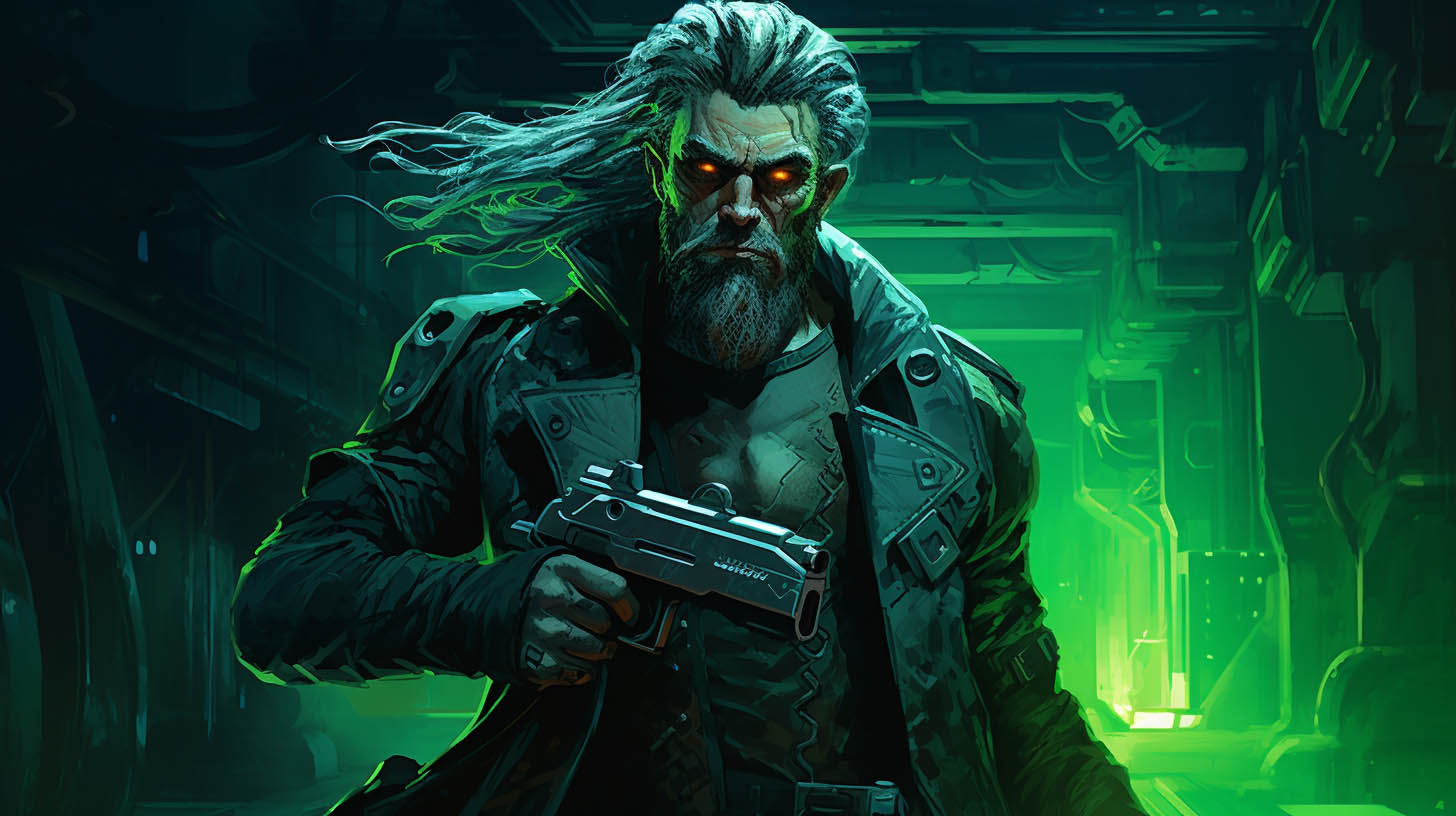In this video tutorial, we’ll go over how you can create your own motion comic using Midjourney-generated images.
A few weeks ago, we produced a tutorial on how to animate Midjourney-generated landscape images in order for them to feel “alive.” Today, we’re going to look at doing the same thing, but this time, with a generated character — and we’ll turn it into a motion comic scene.
In today’s digital age, bringing static images to life using animation techniques is a highly sought-after skill. Not only does it add dynamism to a piece, but it can also narrate stories in a more interactive manner. In this detailed walkthrough, we will discuss how to animate a cyberpunk detective image, step by step, using Photoshop and After Effects.
If you check out the video, you’ll notice it runs for over an hour. Honestly, that doesn’t translate well into an engaging, short-form article. And even with my decade-long experience in content writing, I’m skeptical about turning a casual hourlong tutorial with coffee breaks into a detailed step-by-step guide. So, it’s best to watch the video for a full understanding.
However, if you’re wondering, “Lewis, what exactly is a motion comic?” I’m here to clarify that for you.
As technology continues to evolve and reshape the entertainment world, various art forms adapt and intermingle, creating novel experiences for audiences. One such innovation is the motion comic — a hybrid medium that bridges the gap between traditional comic books and full-blown animation. Though it has its own unique characteristics, its roots in the comic book realm are undeniable. Let’s delve into motion comics, their history, and why they’re captivating a new generation of fans.
What Is a Motion Comic?
There’s not a lot of magic behind the name; it’s pretty much how it sounds: an animated comic book. While a regular comic book relies on illustrations and text to convey a story, motion comics introduce limited movement, voice acting, music, and sometimes even 3D effects to bring these images to life. Just like this one:
The thing is, motion comics aren’t simply animations, not in the traditional sense anyway. They’re more restrained, retaining their source material’s stylistic and narrative essence. The movement in motion comics is often subtle:
- The fluttering of a cape
- The shifting of a character’s eyes
- The slow pan across a vivid landscape
Or, in our case, the blinking of a cyborg’s eye while raising his cyberpunk weapon.
The Rise of Motion Comics
It wasn’t until the age of the internet, and specifically the rise of digital platforms, that motion comics began to gain traction. In fact, and you may not know this, they are published quite regularly by Marvel and DC. On a weekly basis, you’ll often find disgruntled fans checking out the latest “trailer” only to find it’s not the newest Marvel Studios film but, rather, a motion comic trailer.
Digital distribution platforms offered an avenue for creators to share these enhanced comics with a broader audience, without the constraints of traditional publishing.
What’s the Purpose?
The thing is, and honestly, I feel the same about my animated result, the final animation can look a little goofy. But… that’s perfectly okay; it’s part of the medium. Motion comics allow you to do several things:
- Innovative Storytelling: Motion comics allow for a dynamic storytelling experience. The addition of movement, sound, and voice acting can enhance the emotional resonance of a scene, drawing readers (or viewers) deeper into the narrative.
- Accessibility: With the proliferation of smartphones and tablets, digital media consumption has skyrocketed. Motion comics perfectly fit these devices, offering bite-sized, engaging content for on-the-go consumption.
- Cost-effective Production: While producing a full-fledged animated series or movie can be prohibitively expensive, motion comics require a fraction of the budget. They utilize existing comic book art, adding a layer of animation, thus making it a viable option for independent creators.
- Preservation of Artistic Integrity: Motion comics often stay true to the original artwork unlike extensive adaptations. This faithfulness to the source material is appealing to purists who value the original aesthetic of the comic.
Finally, depending on your project, you can use a motion comic to fill in the blanks of otherwise off-limits areas. For example, a decade ago, director Joe Carnahan presented a sizzle reel for a Daredevil project he wanted to create. This would set the character in the 1970s against the Kingpin and his crime empire. While he had footage from the Affleck film and numerous crime dramas, there was still an absence of Daredevil-related medium to use, so they animated several comic panels to fit into the video.
Make Your Own Motion Comics
As with any evolving medium, the future of motion comics is uncertain but promising. And with our tutorial above, you’re one step closer to making your own motion comic.
Transforming a static image into a dynamic visual experience combines technical skills and creative imagination. Leveraging the power of tools like Photoshop and After Effects, even a cyberpunk detective with long green hair can come alive on the screen.
As we saw, techniques such as limb rotation and blinking eyes add layers of realism to the movement. It’s all about the nuances, the subtlety, and the attention to detail. The result, reminiscent of motion comics, is a testament to the fact that you can breathe life into any visual piece with the right approach, no matter how intricate or static it might initially seem.
Looking for filmmaking tips and tricks? Check out our YouTube channel for tutorials like this . . .



